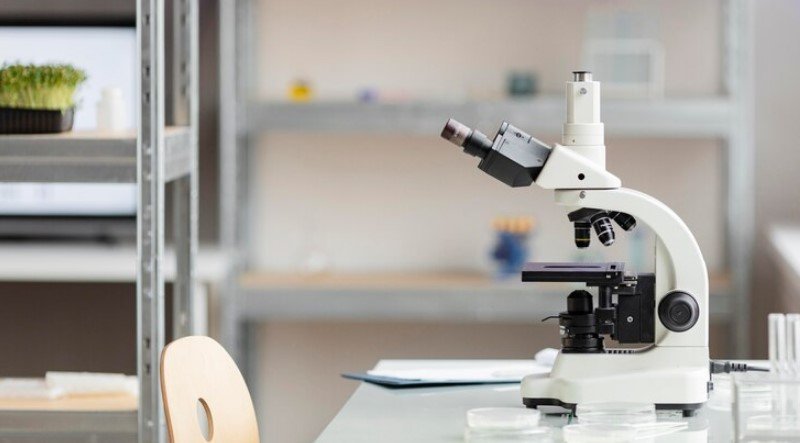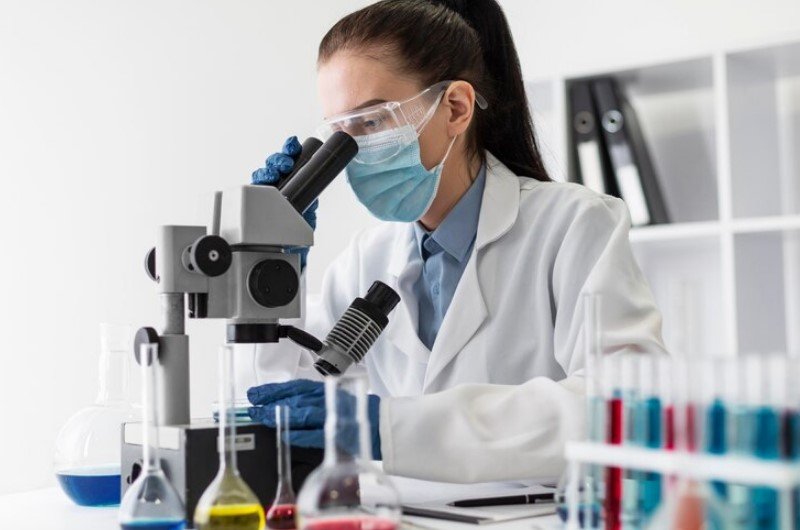Function of Stage Clips on a Microscope
Microscopes are essential tools in various scientific fields, allowing for the detailed observation of specimens at a microscopic level.

Microscopes are essential tools in various scientific fields, allowing for the detailed observation of specimens at a microscopic level. One of the critical components that ensure the functionality and accuracy of a microscope is the stage clips.
These small but vital parts hold the slide securely in place on the microscope stage, enabling precise and stable observation. This article delves into the function, use, and benefits of stage clips on a microscope.
What are Stage Clips on a Microscope?
Stage clips are metal clips attached to the stage of a microscope, used to hold the slide in place during observation. They are essential for maintaining the stability and position of the slide, ensuring accurate and precise observation of the specimen.
Stage clips are typically made from durable materials to withstand repeated use and provide consistent performance. Their design allows for quick and easy placement and removal of slides, making them convenient for various types of microscopy work. Stage clips help prevent accidental slide movement, which can disrupt the focus and quality of observations.
The Function of Stage Clips on a Microscope
Stage clips are a critical component of a microscope, designed to hold and secure the microscope slide in place on the stage. Here’s a detailed look at their function:
-
Securing the Slide
- Primary Function: The main purpose of stage clips is to hold the microscope slide securely on the stage, preventing it from moving during observation.
- Stability: By securing the slide, stage clips ensure that the specimen remains stable and in focus, even when the stage is moved or the microscope is tilted.
-
Ease of Adjustment
- Adjustable: Stage clips can be adjusted to accommodate slides of various sizes. This flexibility is crucial for different types of observations and specimens.
- Slide Movement: While stage clips hold the slide in place, they still allow for slight adjustments and movements. This is important for examining different areas of the specimen without removing and repositioning the slide.
-
Improving Accuracy
- Precise Observation: With the slide firmly held by the clips, it’s easier to achieve precise focus and detailed observation. Any slight movement of the slide can disrupt the focus, making it difficult to observe fine details.
- Reproducibility: Stage clips help maintain the position of the slide, allowing for consistent and reproducible results, which is particularly important in scientific studies and experiments.
-
Protecting the Slide and Specimen
- Minimizing Damage: By holding the slide securely, stage clips minimize the risk of the slide slipping or falling, which can lead to damage to the slide or specimen.
- Reduced Handling: Less frequent handling of the slide reduces the chance of contamination or damage to the specimen.
-
Supporting Mechanical Stages
- Compatibility: On microscopes equipped with mechanical stages, stage clips work in conjunction with the stage’s movement controls, allowing for precise and controlled movement of the slide.
- Enhanced Control: This combination allows for detailed scanning and mapping of the specimen, which is crucial for thorough analysis.

Do Stage Clips Affect the Focus of the Microscope?
Stage clips do not directly affect the focus of the microscope, but they play a crucial role in maintaining slide stability. By keeping the slide securely in place, they help ensure that the focus remains consistent on the specimen.
Preventing any movement of the slide during observation helps maintain clear and precise focus throughout the entire viewing process. This stability is particularly important when observing delicate or small-scale specimens where even slight movements can impact the clarity of the image.
Adjusting Stage Clips on Your Microscope
Here are the 5 most important steps for adjusting stage clips on your microscope:
- Assess Tension: Begin by evaluating whether the stage clips are too tight or too loose by testing their grip on a slide.
- Adjusting Tight Clips: If the clips are too tight, gently bend them outward using your fingers or adjust any screws present to loosen them slightly.
- Adjusting Loose Clips: If the clips are too loose, gently bend them inward to increase their grip on the slide. Tighten any screws incrementally if necessary.
- Test Adjustment: Place a slide on the stage and secure it using the adjusted clips. Ensure the slide is held firmly without any movement when lightly nudged.
- Fine-Tuning: Make small adjustments as needed to achieve the optimal tension for securely holding slides during observation. Regularly check and adjust clips to maintain consistent performance.
Replacing or Upgrading Stage Clips
It is possible to replace or upgrade stage clips on many microscopes. Compatible clips can often be sourced from microscope accessory suppliers, allowing you to enhance the functionality and convenience of your microscope setup.
Upgrading stage clips can improve slide stability and ease of use, adapting your microscope to better suit specific research or observation needs. Consider consulting with a microscope specialist like this portal or supplier to ensure you choose the most suitable clips for your microscope model and application requirements
Conclusion
Stage clips play a vital role in microscopy by ensuring the slide's stability and precise positioning, thereby enhancing the accuracy and quality of observations. They are an essential feature for both simple and complex microscopes, contributing significantly to the functionality and efficiency of the instrument.
By understanding and properly using stage clips, users can achieve more reliable and detailed observations, making the most of their microscopy work.


 Michael James
Michael James 









